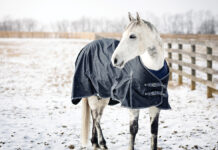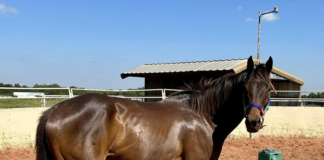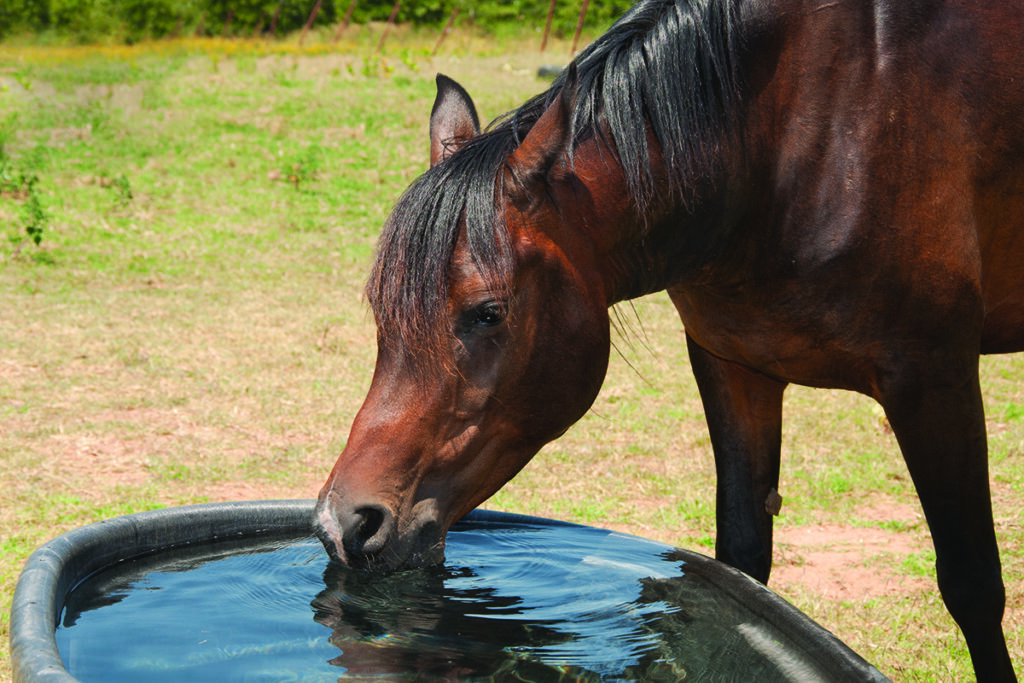
When it comes to summer, hot weather has its own brand of risk factors for horses. Knowing what can possibly go wrong will allow you to take proactive steps to properly manage your horse’s health in the summer.
Dehydration
The average 1,000-pound horse drinks a minimum of 5 gallons of water a day, often much more during hot weather. Your horse needs 24/7 access to cool, fresh water, which may require relocating water sources into the shade.
“The No. 1 heat-related issue that we see in our practice is dehydration colic,” says Christine Staten, DVM, a large animal veterinarian with Adobe Veterinary Center in Tucson, Ariz. “The GI tract is the lowest priority organ, so when your horse is even slightly dehydrated, the body sends the fluid to the highest priority organs first, which leaves the GI tract super dehydrated. When that happens, it slows down and doesn’t work to move the food and gas. This can be incredibly uncomfortable, and in the worst cases, can progress to a displacement if not addressed.
“The most important and effective treatment for these horses is water, either through a nasogastric tube or through an IV,” Staten continues. “Water is more important than any medication we could give.”
Overheating
As outdoor temps climb, it’s much easier for horses to overheat. It’s important to monitor temperature carefully as a precaution to maintain horse health in the summer.
“Horses that are overheated tend to have higher body temperatures and respiratory rates,” says Staten. “If your horse is not exercising and he is breathing faster than 20 breaths per minute or his body temperature is higher than 101.5 degrees, he is likely overheated.”
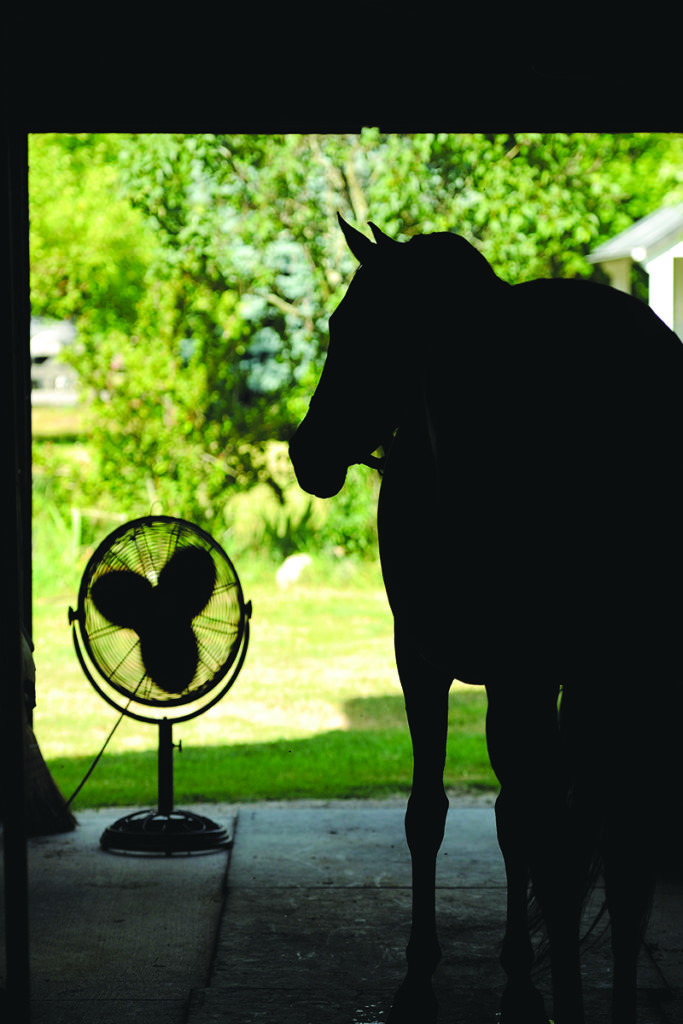
Call your veterinarian immediately if your horse shows any of the following signs:
◆ Elevated respiration even when at rest (normal range is 10 to 15 breaths per minute)
◆ Continued elevated pulse when at rest (normal range is 30 to 44 beats per minute)
◆ Irregular heartbeat or “thumps”
◆ Body temperature 103 degrees Fahrenheit or higher
◆ Profuse sweating or no sweating
◆ Dehydration
◆ Depressed, listless attitude
While waiting for the vet to arrive, get your horse into the shade. Allow him to drink as much cool water as he wants.
Using a hose, run cool water over the large blood vessels along the inside of his hind legs, belly and neck. Pouring rubbing alcohol over his back and standing him in front of a fan can also help lower body temperature.
Anhidrosis
Horses living in regions where hot temps are combined with high humidity are more at risk of anhidrosis, which is the partial or total inability to sweat. This can wreak havoc on your horse’s health in the summer.
Signs of anhidrosis include panting, rapid breathing with noticeable flaring of the nostrils, elevated temperature even at rest, decreased energy, and sparse, dry hair coat, sometimes with scaliness or thinned hair on the face, neck and shoulders.
“Anhidrosis is seriously dangerous for a horse’s life, and we do not have a cure for it. It’s primarily about managing their environment,” says Faith Hughes, DVM, DACVS, who has been with Peterson Smith Equine Hospital & Complete Care in Ocala, Fla., since 1991.
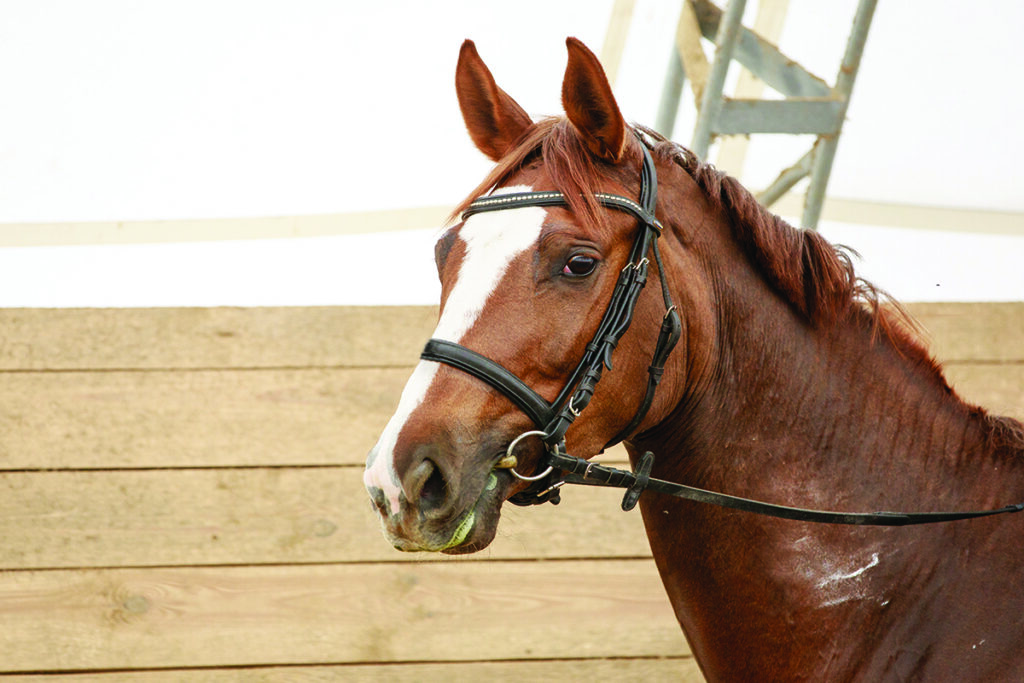
Management includes using sprinkler systems and fans, not exercising when it’s hot, feeding during cooler times of day, and making sure the horse always has cool water available. You’ll find a variety of supplements on the market designed to help manage anhidrosis.
Mosquito-Borne Disease
Another major threat to your horse’s health in the summer comes along with those buzzing pests that bother everyone at the barn. Eastern and western equine encephalomyelitis (EEE, WEE) and West Nile virus are the main mosquito-borne diseases that affect horses. Fortunately, proven vaccines are available to prevent them.
These are considered “core” vaccines, meaning all horses should receive them. In regions with heavy mosquito populations, veterinarians often recommend horses be vaccinated against these diseases twice a year to avoid this summer danger for horses.
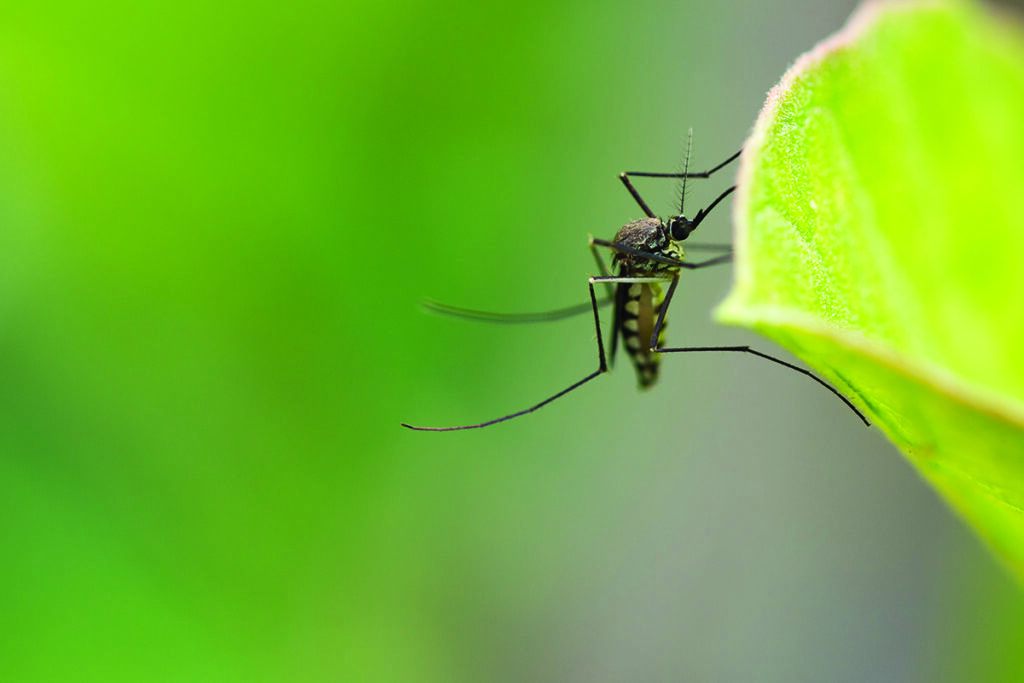
“We have cases of EEE in Florida every year, which serves as a reminder that this disease is not gone and is not more prevalent only because of vaccination,” says Hughes. “Encephalomyelitis vaccines are more than 99 percent effective at preventing the disease when administered effectively.”
In addition to vaccinating your horse, use repellents labeled for use against mosquitoes. Cut down on mosquito breeding areas by eliminating standing water and damp vegetation.
Fly Problems
Fly control—both on-horse and in the environment—is important, not only because flies are irritating, but because they are responsible for transmitting a variety of diseases, including pigeon fever and equine infectious anemia, to mention only a couple.
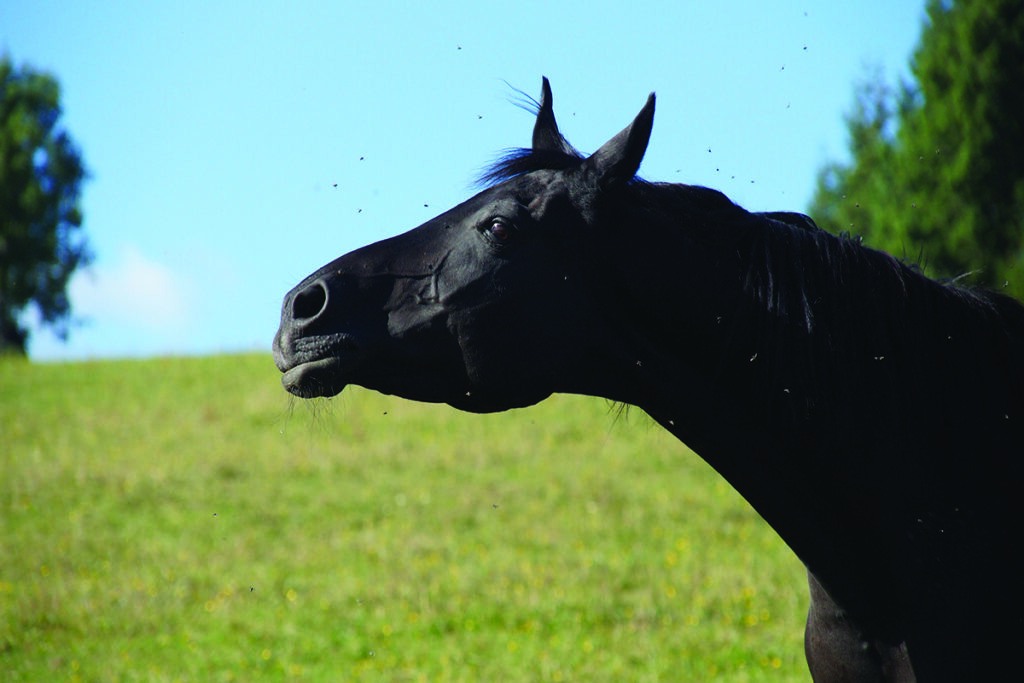
House and stable flies also play a role in summer sores (cutaneous habronemiasis), weeping skin lesions caused by the infective larvae of stomach worms.
“Summer sores are very treatable, but they’re uncomfortable for the horse and annoying for the owner,” says Hughes. “Pay attention to any scratch or wound and keep them clean, since summer sores need an open sore to start.”
Hoof Concerns
Flies can also spell trouble for your horse’s hooves.
“I’ve seen horses pop clinches and loosen new shoes in just a couple days from stomping their feet at flies,” says certified journeyman farrier Jason Maki of the College of Veterinary Medicine Teaching Hospital at Texas A&M University. “With continued stomping on hard ground, barefoot horses can bruise and chip their feet.”
White line disease can also increase during the summer in both barefoot and shod horses.
“As the humidity goes up, that fungus tends to proliferate,” says Maki. “Keep an eye out for separation and any gray powder along the white line and dorsal cracks at the toe.” He says the problem is treatable with a topical chlorine dioxide product and proper trimming.
Dry, hard hooves are more susceptible to cracks and chips.
“Providing an area with moisture will help minimize the damage of excessively dry feet,” says Maki. “A classic solution is to overflow the water tank enough that there’s a place for their feet to get damp every day.”
Hooves tend to grow faster during warm weather, so you’ll likely have to shorten your trimming or shoeing cycle.
Poisonous Plants
Weeds—some of which are poisonous to horses—grow quickly during the summer, and can be a danger for horses. Generally speaking, horses will avoid eating poisonous plants, but if they are hungry (or young and curious), they may eat plants they wouldn’t otherwise.
Your local university extension office will have a list of poisonous weeds in your area. Walk turnout areas and fields regularly to identify and remove any poisonous plants.
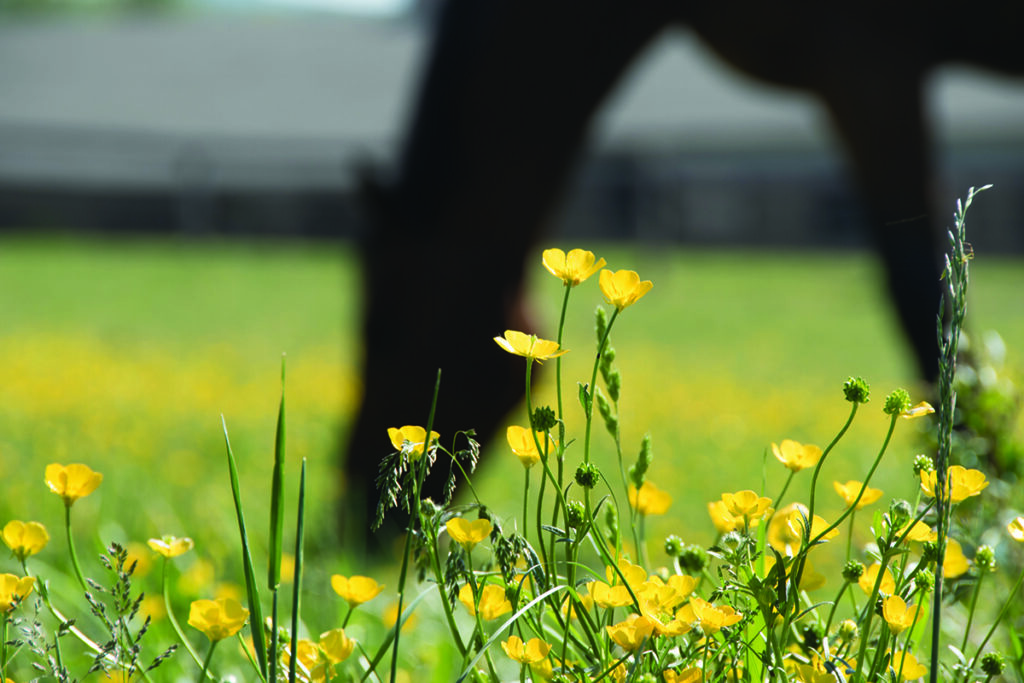
Feed Spoilage
Feed and hay can grow mold and mildew quickly when it’s hot and humid, so buy smaller quantities. Use your eyes and nose to check for off-smelling feed and hay.
If you wet feed and hay (including hay cubes or pellets) for older horses with dental issues, realize that dampened feed products spoil quickly in the heat. Discard any leftovers promptly and clean feed tubs daily.
Snakebite
If you live in a regions with western or eastern diamondback rattlesnakes, your horse can be at risk of snakebite.
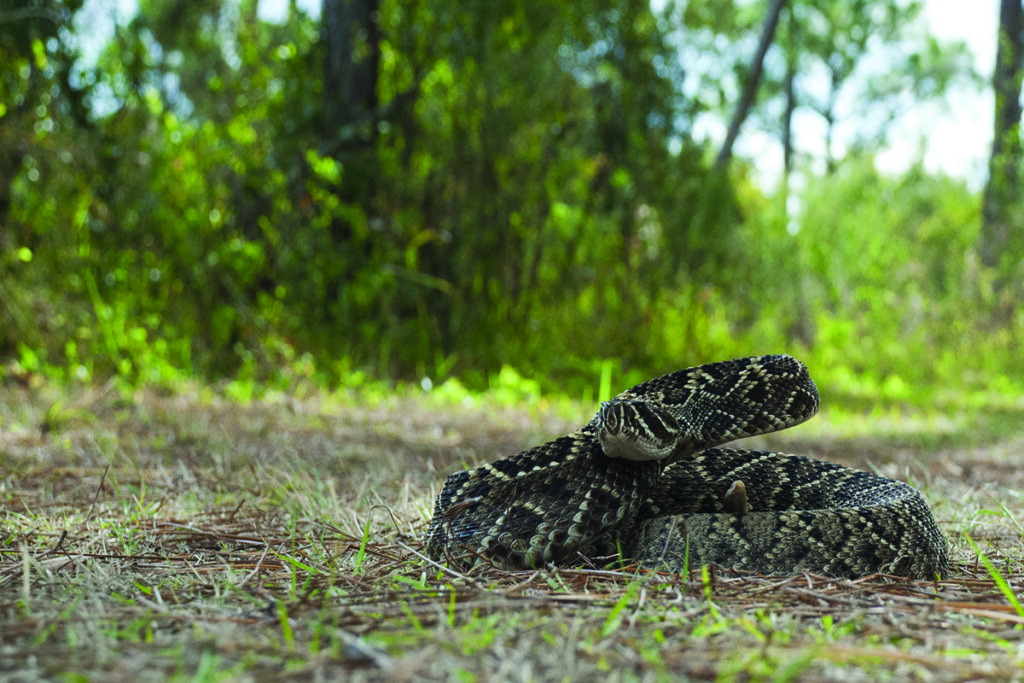
Rattlesnake venom has a necrotizing effect because it starts killing and “digesting” tissue around the bite. In addition to damaging tissue, the venom also affects the victim’s circulatory system, destroying blood cells.
A rattlesnake bite is always an emergency and requires prompt veterinary treatment.
Exercise in Hot WeatherIf you’re try to be conscious of your horse’s health in the summer, you’re likely wondering when it’s too hot to ride. “Overheating is dependent on both the temperature and the humidity,” says Christine Staten, DVM, a large animal veterinarian with Adobe Veterinary Center in Tucson, Ariz. “A heat stress study done by Kentucky Equine Research said that if you add the outside temperature [in degrees Fahrenheit] to the humidity [percentage] and the number is over 150, it is difficult for your horse to lose an appropriate amount of heat. Every horse is different, so you should talk with your veterinarian about your specific horse and your specific climate.” The horse’s average temperature ranges from 97.5 to 101 degrees Fahrenheit. Know what is normal for your horse so you can tell if his temperature rises above his normal range. Checking HydrationDo a quick dehydration check on your horse: ◆ Pinch a section of skin on the flat area of his neck. In a hydrated horse, skin will flatten back immediately once released. If skin stays “tented” more than one second when released, the horse is already dehydrated. |
This article about managing horse health in the summer originally appeared in the July 2021 issue of Horse Illustrated magazine. Click here to subscribe!



